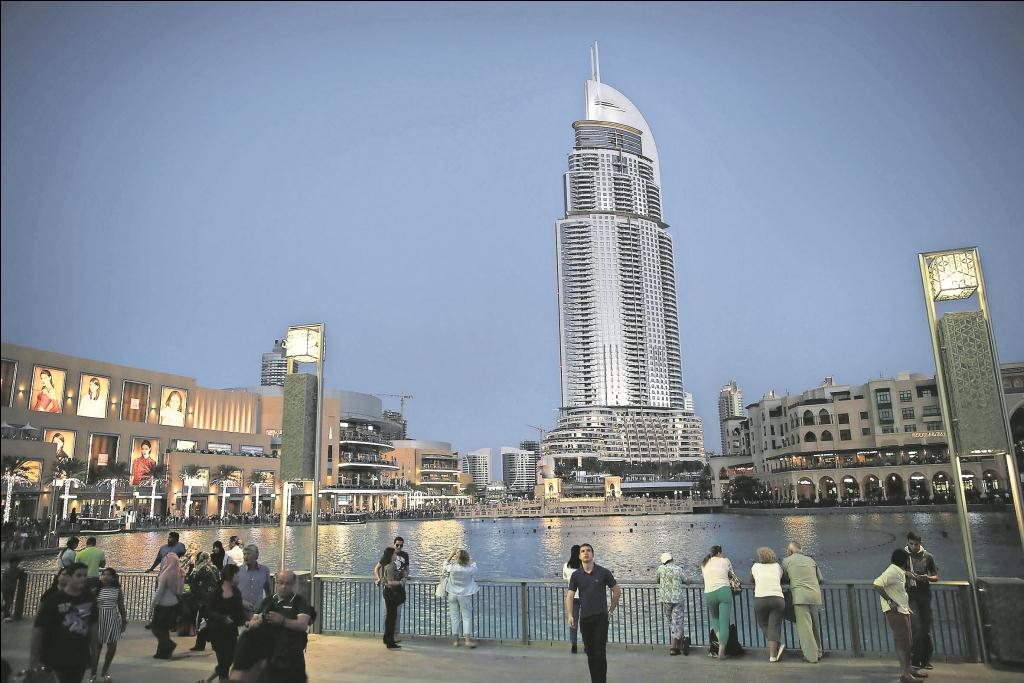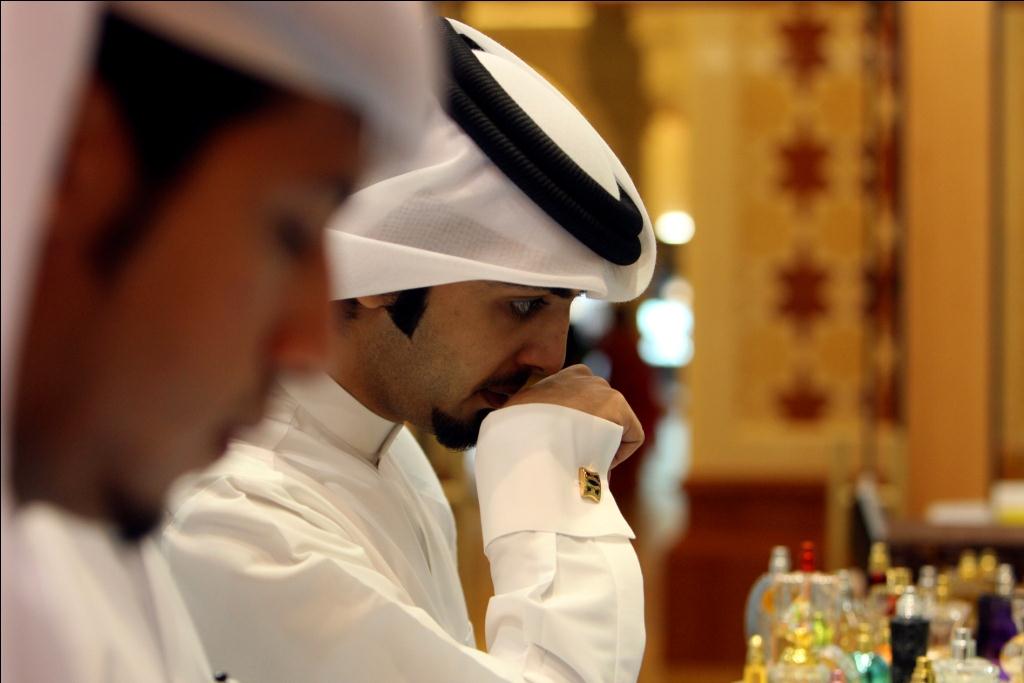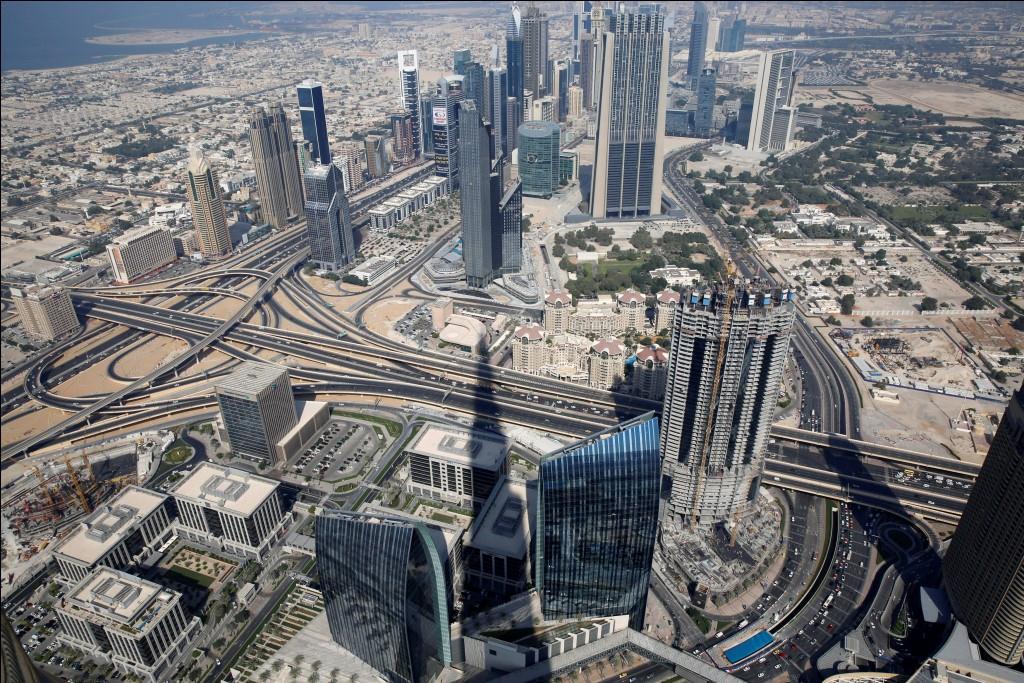A city of contrasts: The spice souk seems a different world from the better-known Burj Khalifa Lake and the Dubai Mall.
Emirates flight EK771 touches down in Dubai. It’s 5am. Peering through the window I see the desert and the lights of this unknown city, watery in the sunrise. I’m en route to Adelaide from Cape Town and my connecting flight leaves a full 19 hours from now. I’m excited. Because of the length of the layover I get a free room in the city and a visa to go out and explore. Some other bedraggled travellers and I climb into the transport shuttle. What is this place? We motor through the still sleeping streets.
“Tour of the city?” asks a jacketed guide in the lobby of the Copthorne Hotel, proffering a brochure. I scan it at breakfast. For 150 dirhams (about R500) I could see two famous hotels, the beach and mosque at Jumeirah, the Bastakia quarter and some of the oldest buildings in the city, and the gold and the spice souks – the city’s old markets. A good mix, a bit of everything. For a little extra I could even go out into the dunes. I’ve heard the ride out there is like a ship steaming through a storm.
I put the brochure aside. I know I’ll see more of Dubai on the tour but I won’t see what I want, which is the place from eye level. I want to be the driver of my own experience; I want time to taste.
On Second Street the Jebel Ali metro station crouches like a spaceship. Dubai’s metro trains are driverless, futuristic pods that fly over the city or suddenly dip down underground. Inside, Dubaians are getting on with their morning like people anywhere do: thinking, listening to music, waiting for the day to materialise. I glance inside a copy of the Metro Times. There’s an article on graffiti, how Dubai is home to artists who are doing world-class work and how that work is commissioned and appreciated. I flip. In the classifieds I read: “One-bed space available for decent executive Indian male, no cooking, located in Bur Dubai …”
Outside the window a field of squat housing passes by, stretching out to the sea.

Burj Khalifa Lake. (Getty)
Arab pride
The Dubai Mall is listed as the largest shopping centre in the world. It’s also the way to the Burj Khalifa, the world’s tallest building. The walk from the metro station winds over a flyover. Down there I can see a statue of two figures, one black and one white, standing under the rising sun. The sculpture is titled Together, a contemplation on Arab pride. I see someone standing a little way away from it, watching, absorbing the morning sun. A Dubaian in slip-slops walks past, breaking the tableau.
Inside, the mall opens up into corridors of shopping, a temple of commerce decorated with fairy lights falling like rain from the ceiling high above. I find myself in the biggest bookshop I’ve ever seen.
“Excuse me,” I ask, approaching a young man waiting for customers outside a tourism shop. “The tower – where is it?” He’s young and bright-looking. Dark eyes and a neatly cropped beard, with a sense of humour just under the surface. “Yes, the Burj Khalifa. Straight on, up the escalator, left, follow the signs.”
A digital display of the Burj slowly rising up flickers around us, as inside the dark elevator we rise. Its 35km/h ascent is smooth, totally cut off from the rushing wind, the air cooling as we push up to the 148th floor, 555m above the sea and the sand.
“Condensation is collected from the glass panels of the building,” says our guide, a young woman with a scraped-back black ponytail, walnut-shaped eyes and lips drawn red. “The water is used to irrigate the gardens at the base. In some ways, the Burj Khalifa is self-sustainable.
“The building is cleaned every three months,” she continues. “Specialised window cleaners begin at the top and three months later they complete their cleaning at ground level. The following day they begin again.”

(Reuters)
On the viewing deck, the city opens up. This is a different world. From up here the air seems thin and the horizon far, drenched in a blue haze of distance that settles at the outer reaches. The waterways of one of Dubai’s hotels swirl below, crystal clear, bright blue and, from up here, seemingly empty.
Another group of tourists is clustered on the viewing deck below. Again, it’s a snapshot of Dubai: a pod of Germans, Australians, Italians, Pakistanis and Americans, all of them excitedly looking down.
It’s time to move on. Walking through the tower, I unfurl a metro guide. My flight leaves in eight hours and I’m hoping to fill at least four of those with sleep. The next destination is obvious: the souks, the old city, the old centre.
“Watch your wallet,” says an Aussie traveller, Paul. “We went down there yesterday, nearly got pickpocketed.”
Where the people live
I step out of the Palm Deira metro station into a different Dubai. There is no chrome here, no highly polished glass or cascading lights; this is where the people live. Two- and three-storey apartment blocks stretch left and right, rows of them, sand-coloured and sun-drenched, with satellite dishes gathered at their joints. Underfoot the tar is hot and the sand dry, the sky’s blue softened by cloud.
It’s quieter here. Turbaned men sit on pavements in the shade with their sandals off, resting, watching. The alleys between the closely packed buildings are gloomy, every doorway leading to the unknown. I shift my wallet from my back pocket to the front and go searching, cutting between the buildings, looking for the souk.
“Breitling! Ferrari! iPhone 6!” Everyone here is a salesperson. I hurry past, hurry on, my Aussie friend’s words a hovering oil stain. “You want shirt? Big brands, good price!”
Suddenly there are crowds in what were empty alleys. And gold! The metal gushes down display windows while tourists stare and take pictures. “Good shirts, the best!”
“What you got?” I ask, tired of hurrying by, wanting to connect, to taste the place. “Come, come.” He leads me through the alleys, not far. The sound of the crowd fades; it’s just me and him, this stranger. “Come in,” he says, opening a door to a dark stairway going up.
I’m nervous, I hang back, giving myself space to escape.
A locked door. He knocks. The click of an electronic lock. Then we’re inside in a blaze of colour, surrounded by brands, brands, brands. “We talk!” says the man in charge. We do. It turns out I’m not there for the shirts, more for the experience.

An aerial view of Dubai from Burj Khalifa, the tallest building in the world. (Reuters)
In another alley I’m in another shop, this one draped with rugs, kaftans and saris. Pako brought me here. He is a black man, an African like me. “I’m from Senegal,” he told me. “I came here in 2004. This is a good place. I can do business here. It’s good for me and my family.”
Balbal, his business partner, appears and the two strike a pose for my camera. All the talk of the danger of this place falls away. Dubai is people – and people, when given the space, are beautiful.
Everyone wants a picture
A crowd draws my attention. At first it seems like a celebrity is in the souk, with so many cellphones filming and snapping shots, until I understand. This is the Najmat Taiba (Star of Taiba), the world’s heaviest gold ring, and everyone wants a picture. I take pictures too, but I’m snapping the faces, collecting bits of the real Dubai.
Back at the hotel it’s late. I switch on the TV and a different Dubai opens up. I didn’t know it, but today was the national day of the United Arab Emirates and the city was packed with celebrations. I see images of Mohammed bin Rashid Al Maktoum and the six other monarchs. I hear of the glory of what Dubai has become, built up from what once was a pearl trading outpost and a fisherman’s cove in the blazing heat – the slow rise of a nation until the discovery of oil gave it wings.
Dubaians speak to reporters, smiling out of the screen, talking about the pleasure of a holiday, talking about the pride of Dubai.
Soon it’s time to leave. The airport shuttle takes me through the same streets in the same watery electric light. Emirates flight EK440 to Adelaide pushes up off the desert and up through the night, up past the Burj Khalifa lit up brightly, and Dubai fades to a splash of electricity in the big darkness. It was a short solo tour, but a good one. I got to taste.